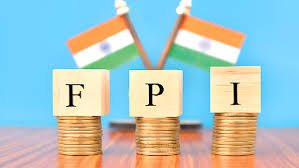India’s forex reserves climb to a new peak of $884 billion, while Q2 GDP growth of 7.6% positions the nation as the fastest-growing major economy globally.
NEW DELHI (Economy India): India’s economy is making headlines as it continues to display robust growth and financial stability. The nation has achieved a record-breaking surge in its foreign exchange reserves, reaching $884 billion, coupled with a remarkable 7.6% GDP growth in the second quarter of FY 2023-24. These developments not only affirm India’s status as the fastest-growing major economy in the world but also highlight the challenges and opportunities that lie ahead.
Forex Reserves Soar to New Heights
India’s foreign exchange reserves have surged by $2 billion, setting a new record at $884 billion as of September 6, 2024. This significant growth marks a $60 billion increase since the start of the year, showcasing the country’s economic stability amidst global uncertainties. The rising reserves are seen as a strong indicator of foreign investor confidence and the government’s effective economic policies.
According to market analysts, this rise in forex reserves is crucial for maintaining economic stability, particularly in a global environment marked by volatility. It strengthens India’s ability to manage external shocks and ensures a buffer against potential economic disruptions.
Q2 GDP Growth Outperforms Expectations
India’s GDP growth in the July-September quarter has surpassed expectations, registering a 7.6% increase. This growth rate outstrips the predictions made by the Reserve Bank of India (RBI) and other economists, who had anticipated a more conservative figure. The primary drivers of this impressive growth include a robust performance in the manufacturing and construction sectors, coupled with a 12% increase in government spending.
Despite this positive trend, there are areas of concern. Private consumption growth has slowed down, recording only a 3.1% increase, which is below the anticipated levels. Economists warn that this could indicate underlying challenges in sustaining consumer demand, which is vital for long-term economic growth.

RBI’s Policy Implications
The better-than-expected GDP figures have led to speculation about the Reserve Bank of India’s (RBI) next move in its monetary policy. Experts suggest that the RBI may adopt a cautious stance in the upcoming monetary policy committee (MPC) meeting. With inflation risks still present, the central bank is likely to prioritize controlling inflation while supporting growth.
Sakshi Gupta, Principal Economist at HDFC Bank, noted, “The GDP print for the second quarter does pose an upside bias for our full-year forecast of 6.5%. However, inflation risks linger, and the RBI is expected to remain vigilant.”
Looking Ahead
India’s economic landscape is currently characterized by strong growth and increasing financial stability. However, challenges such as inflation control and boosting private consumption remain. As the nation navigates these complexities, the government’s policies and the RBI’s decisions will be crucial in sustaining this momentum.
Economy India












